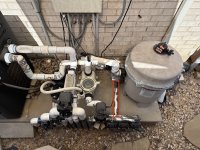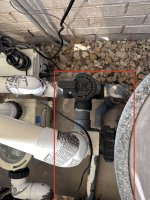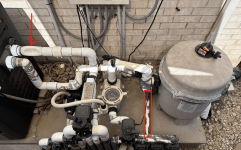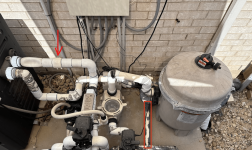- Sep 6, 2022
- 44
- Pool Size
- 18000
- Surface
- Plaster
- Chlorine
- Salt Water Generator
- SWG Type
- Pentair Intellichlor IC-40
Hello All,
Quick question for the group. Purchased a house a year ago with our first pool. Have gotten a grasp on chemistry and my equipment pad, with the exception of one 3-way valve, right after the filter. I'm wondering if it is common/you all think that this may connect directly to sewer for purposes of draining the pool? It's an unmarked pipe off of a manual 3way valve immediately after the filter outlet coupling. Pics below. Any way to determine where this goes? It goes back down into the ground between my suction side piping.
Quick question for the group. Purchased a house a year ago with our first pool. Have gotten a grasp on chemistry and my equipment pad, with the exception of one 3-way valve, right after the filter. I'm wondering if it is common/you all think that this may connect directly to sewer for purposes of draining the pool? It's an unmarked pipe off of a manual 3way valve immediately after the filter outlet coupling. Pics below. Any way to determine where this goes? It goes back down into the ground between my suction side piping.





